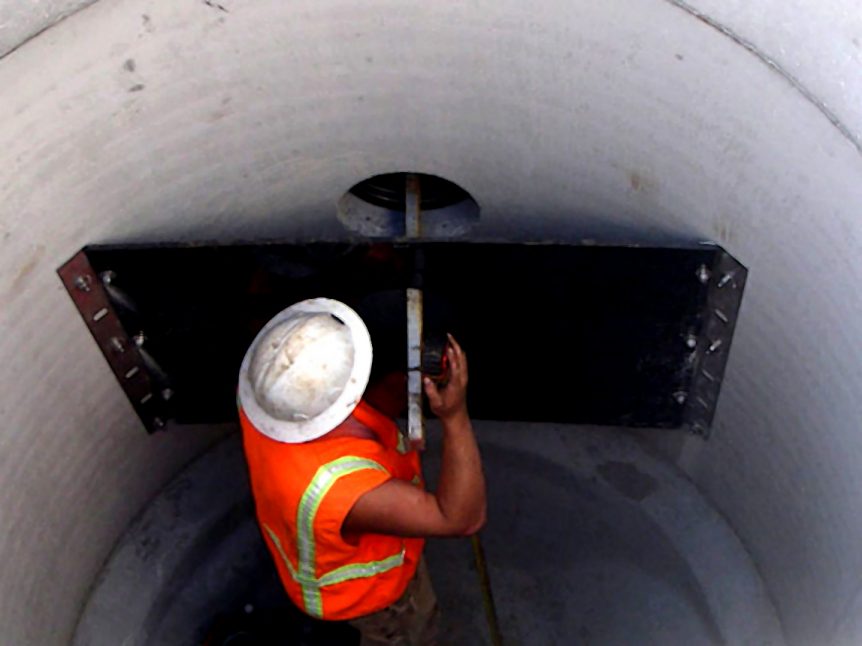Romtec Utilities frequently include drop bowls or deflector panels into wastewater lift station designs. These simple devices improve the function of the wet well and protect key lift station components from wear. Some customers, however, are not familiar with these devices. Drop bowls and deflector panels serve several important functions, such as preventing cascading water, reducing turbulence, and redirecting solids.

Cascading Water
Cascading water, especially sanitary sewer, can cause a lot of maintenance concerns in a wastewater lift station. As an inlet line discharges into a wet well, the water free falls to the bottom of the sump. Depending on the depth of the sump from the inlet line, the cascading water can deliver a lot of force. This force can erode the bottom of the sump, and in submersible systems, the pump components. Drop bowls and deflector panels impede the incoming water and drastically reduce the amount of force that impacts the system.
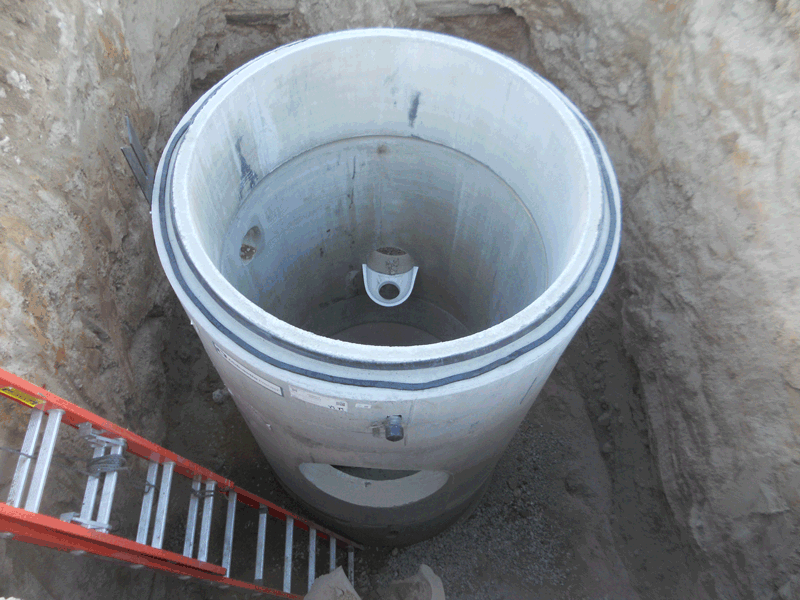
Turbulence
Turbulence is another consequence of cascading water, and it can cause even more problems. The first concern with turbulence is an effect called cavitation. Cavitation is when air bubbles form in the water and are pumped through the system. It can cause two maintenance problems. First, cavitation reduces pump efficiency, making the pump motors work harder than needed. Second, cavitation eats away at the pump impeller, discharge piping, and downstream valves.
The second concern with turbulence is the disruption of components in the wet well. Primarily, this problem is related to level sensing devices. Devices such as floats, ultrasonic transducers, and probes take more accurate readings with a relatively calm water surface. Excessive turbulence caused by cascading water can create inaccurate readings that can result in sometimes very serious problems. When drop bowls and deflector panels reduce the force of incoming water, they also reduce turbulent conditions.
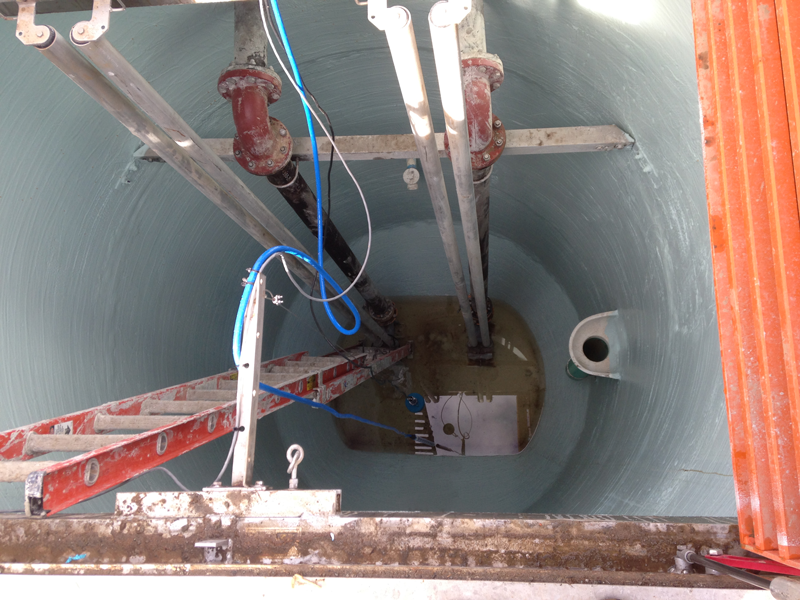
Redirecting Solids
The final major function of these devices is that they redirect solids in the wet well. Solids can present a problem for lift stations in two ways. They can settle out of the water and collect at the bottom of the sump when the pumps are off, or they can float and collect at the top. Drop bowls and deflector panels direct solids to the bottom of the sump where the pumps or suction lines are located. Directing the solids in this way means that more will get pumped during pumping cycles. The water flow toward the bottom of the sump also agitates solids that might settle to the bottom. Getting solids pumped through the system reduces the need for frequent maintenance and cleaning of the wet well.
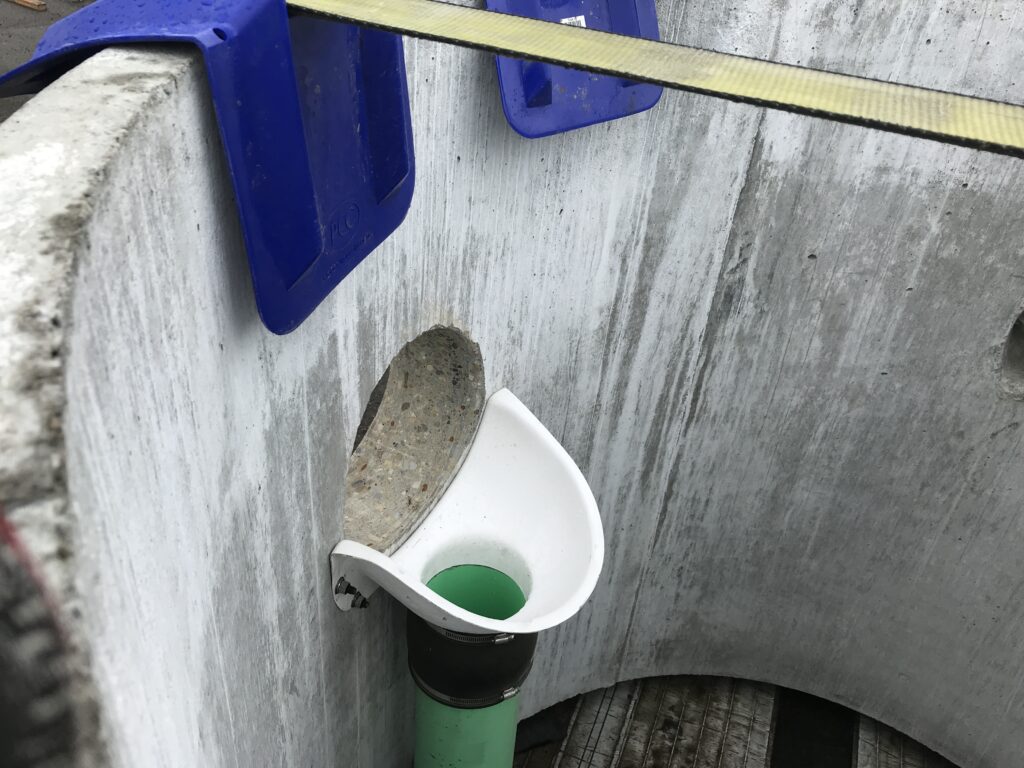
Drop Bowl or Deflector Panel
Although these devices both perform similar functions, they are not used in the same applications. A drop bowl is an assembly made of PVC and mounting hardware mounted to the side of the wet well below the inlet line. It looks like a funnel or bowl mounted on top of a vertical pipe. Romtec Utilities purchases Drop Bowls from Reliner.
A pipe runs from the bowl toward the bottom of the well. A deflector panel is a large sheet (typically of HDPE) that mounts to the wet well and obstructs the inlet line. Gravity then directs the flow down the panel to the bottom of the well. Drop bowls increase in size as the flow into the well increases, which can create an issue of space in the well. In most wastewater lift station designs; deflector panels will be used in systems with incoming flows of over 200 gpm. In systems of that size, deflector panels require much less space and serve the same basic functions.
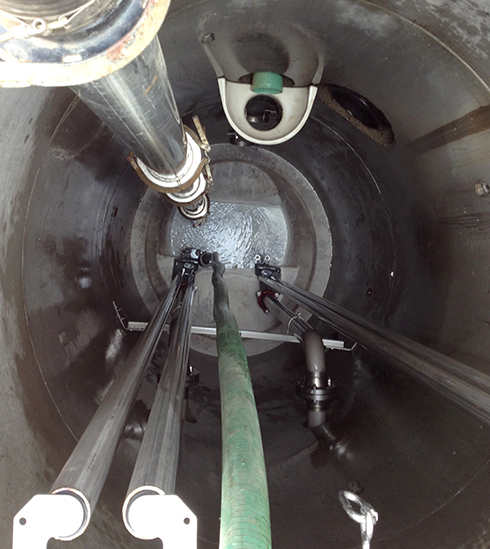
Deflector Panel Project Example
A deflector panel was utilized on an industrial wastewater lift station that had a peek inflow of 225 gallons per minute.
The deflector panel is made of HDPE panels, stainless steel brackets, and mounting hardware. This panel is attached to the inside of the wet well in front of the inlet pipe. As water flows in, the panel diverts the incoming flow to the bottom of the wet well.
This system has a high flow of cascading water (inflow of 225 gpm) that could damage the pumps and other in-well system components, but the deflector panel protects these elements by redirecting the inflow. The high inflow required a deflector panel for this wastewater lift station.
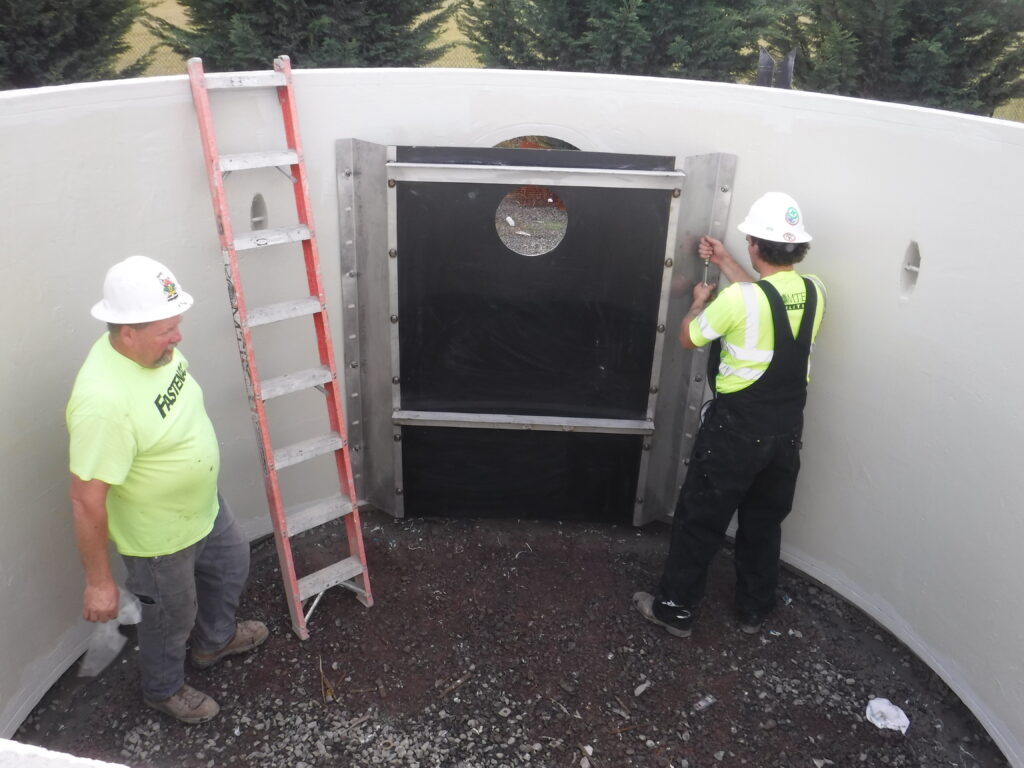
Drop Bowl Project Example
For a smaller wastewater lift station in Phoenix, Arizona for a wildlife rehabilitation facility a drop bowl was utilized. The peak inflow on this system was 60 gallons per minute.
The drop bowl prevented wastewater from cascading over the pumps and into the well which could damage pumps or other components in-well.
Drops bowls and deflector panels are an inexpensive way to eliminate a lot of concerns regarding maintenance and component life of a lift station. Romtec Utilities frequently employs them in wastewater lift station designs, and customers rarely have an objection when they understand the benefits that these simple devices offer. For additional information, check out our technical information about wet wells. You can also contact us with any additional questions or inquiries.

